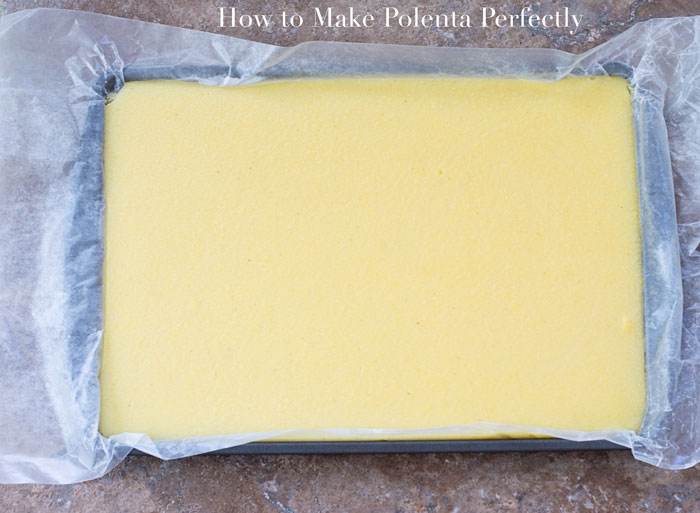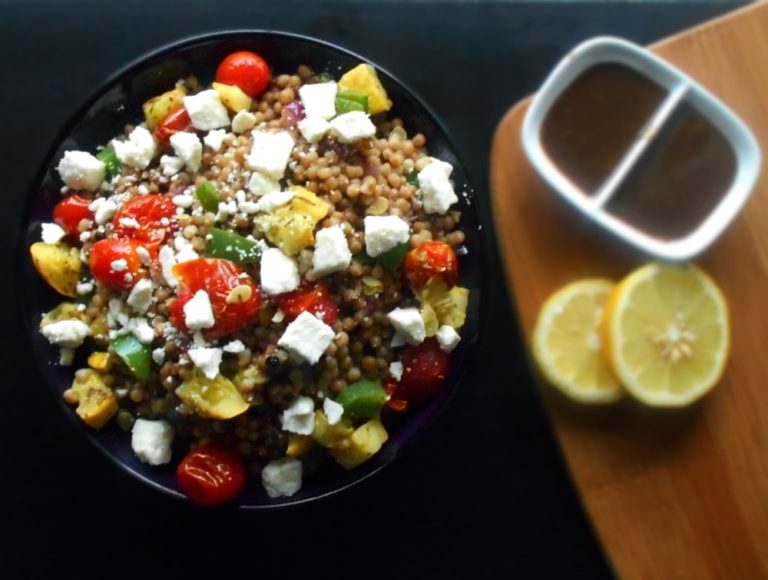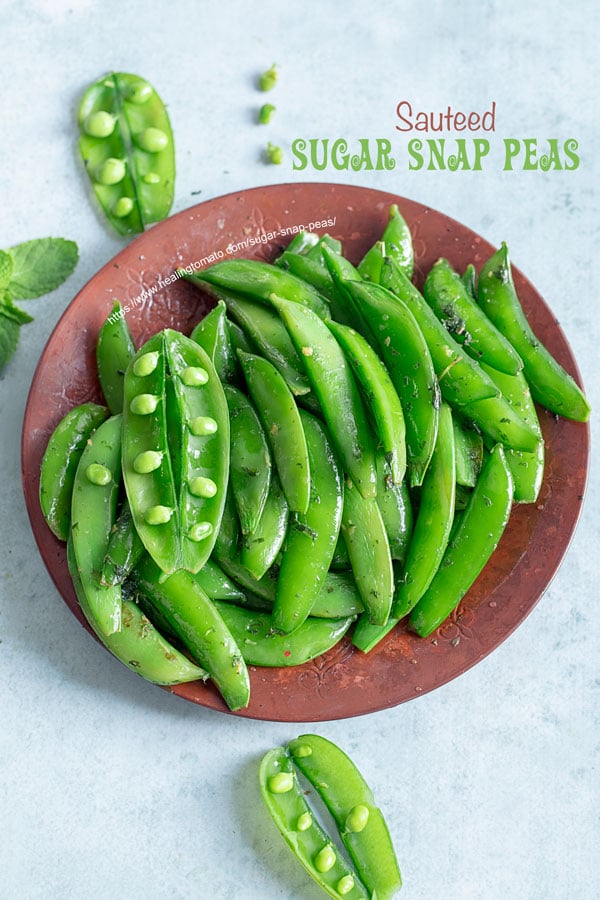How to make polenta perfectly? The secret ingredients added to precooked yellow corn meal is Baking Soda. Learn about all the different types of cornmeal
The day I discovered that I cam make polenta at home was the greatest day!
I put polenta in 2 previous recipes and there are 2 more polenta recipes coming in the next week!

“What is Polenta?” That is the question I asked when I first heard the word. This was in 2002 when I was at a friend’s house and her grandmother was making it.
I had never heard of yellow corn meal until that day because I had been living under a rock!!
So, what is polenta? My friend explained it to me simply as, “Italian Grits”
That I understood.
Polenta is cooked yellow corn meal. Can you believe that’s all there is to it?
After understanding that, I went on a tasting spree. I tried every recipe that had polenta in its name and they were all DELICIOUS!!

I want to stress the word delicious because I couldn’t find one recipe that I didn’t like.
Next week, its a week long salute to polenta. I have 2 amazing Polenta recipes that you can’t miss. One is a snack with a little kick to it and the other is a hearty dinner recipe. I can’t wait to see what you think of them!
In its simplest definition, cornmeal is dried corn that has been ground at different levels of courseness. I did some (boring?) homework on all the different kinds of cornmeal so you don’t have to! Sit back and enjoy the crash course on cornmeal.
Then, continue reading to find out how to make polenta like a pro!
With this polenta, you can make polenta wedges or use a creamier version to top veggies on it.

Types of Yellow Corn Meals
1) Yellow Whole-Grain Cornmeal
Whole grain cornmeal is when the dried corn is ground just enough to make it edible. It contains all the parts of the corn including the oil, vitamins and hull. Since the oil part of it can “spoil” the cornmeal, it has a short shelf life. If you happen to purchase it, store it in the refrigerator. Use it to make some amazing muffins or cornbread
2) Yellow De-germinated Cornmeal
This is the most common type of cornmeal that you will find in grocery stores. It has a long shelf life because it is ground finely and missing most of the oil component of corn. It can be stored in a cool, dry place in the pantry. If you live in hot weather areas, keep it in the refrigerator. That’s where I store mine because Florida is the known for its sizzling heat.
3) Yellow Coarse-Ground Cornmeal
The dried corn is ground up roughly. Its texture is rough to the touch but not as much as the Whole Grain cornmeal. In fact, most companies will label this texture as “Polenta”. Most cooks use this to make polenta, but, I am going to use a different ground to make mine. It also has a good shelf life and you will find that most grocery stores carry it.
4) White Stone-Ground Cornmeal
For this ground, dried white corn is used to make the cornmeal. It has a milder flavor than the yellow cornmeal, so, I recommend pairing it with strong flavors. I have tried making cinnamon cornbread with it and it was delicious! Top it with warm honey and you have a yummy side dish!
5) Masarepa
Masarepa and Masa Harina always confuses me. I can’t tell you how many times I have tried to figure out which one to use in a recipe. I call it my “Masarepa vs Masa Harina” wars. Masarepa is more refined and softer. You can find it in stores as, “Harina De Maiz”. The corn is precooked then ground into corn flour. It is very smooth in texture and that’s why they make for the PERFECT base for polenta. That is what I will use in my recipe below. The white corn version of Masarepa is used to make arepas and you just might see a recipe of it soon on this blog! Side note, the keyword here is precooked. It softens the cornmeal and makes it easier to cook it.
6) Masa Harina
This is how I understand Masa Harina: It is corn that is first soaked and then cooked in an alkaline solutions. The most common alkaline solution is Lime juice. I learned a new word when I was researching the process. It is called “Nixtamalization”. I just love adding new words to my dictionary. Anyway, back to Masa Harina. Nixtamalization removes the outer lining of the corn, as well as the “germ”. The kernels are then ground into Masa or Dough. As if that wasn’t enough torture, the dough is then dehydrated. It goes through one last torture of being finely ground before being packaged. Masa Harina is commonly used to make tortillas
So, now that you and I know about all the different types of cornmeal, we are finally ready to make the BEST polenta ever!
Let’s learn how to make polenta perfectly!
How to Make Polenta

How to Make Polenta
Ingredients
- 4 cups water to soak the corn meal
- 1 cup yellow corn meal the precooked version
- ⅛ tsp baking soda
- 2 cups water to cook the corn meal
- 1 tsp salt
- 1 tsp Thyme optional, Use fresh thyme only
Instructions
- In a bowl, add the yellow corn meal, baking soda and the water to soak
- Soak for 1½ hours
- In a pan, add salt, Thyme and water. Bring to a boil
- Drain the excess water from the soaking corn meal
- Slowly add the yellow corn meal with one hand while stirring the other
- Keep stirring until completely blended and thickened
- Remove the polenta from heat and immediately spread it on a baking tray
- The layer should be even.
- Let it cool in the refrigerator for about 3 hours
- Make any shapes from it using a cookie cutter








The lime in masa isn’t the citrus lime. It is a mineral called calcium hydroxide which is similar to lye. It basically eats away the skin off the corn.
Thanks for your curiosity and experimentation. I was curious about usinfmg the masarepa for polenta too. By the way, the precooked masarepa comes in white or yellow. I mix them together for a sweeter taste. Have you ever made arepas? They are kind of like fried polenta which has always been one of our favorites.
You REALLY need to research Masa a LOT further. You got it all wrong.
What exactly did I get wrong? What details are incorrect in it? What’s your authority on Masa?? You come across just as a spammer and a troll when you don’t give any details. The info I gave here was from my research and talking to other chefs.